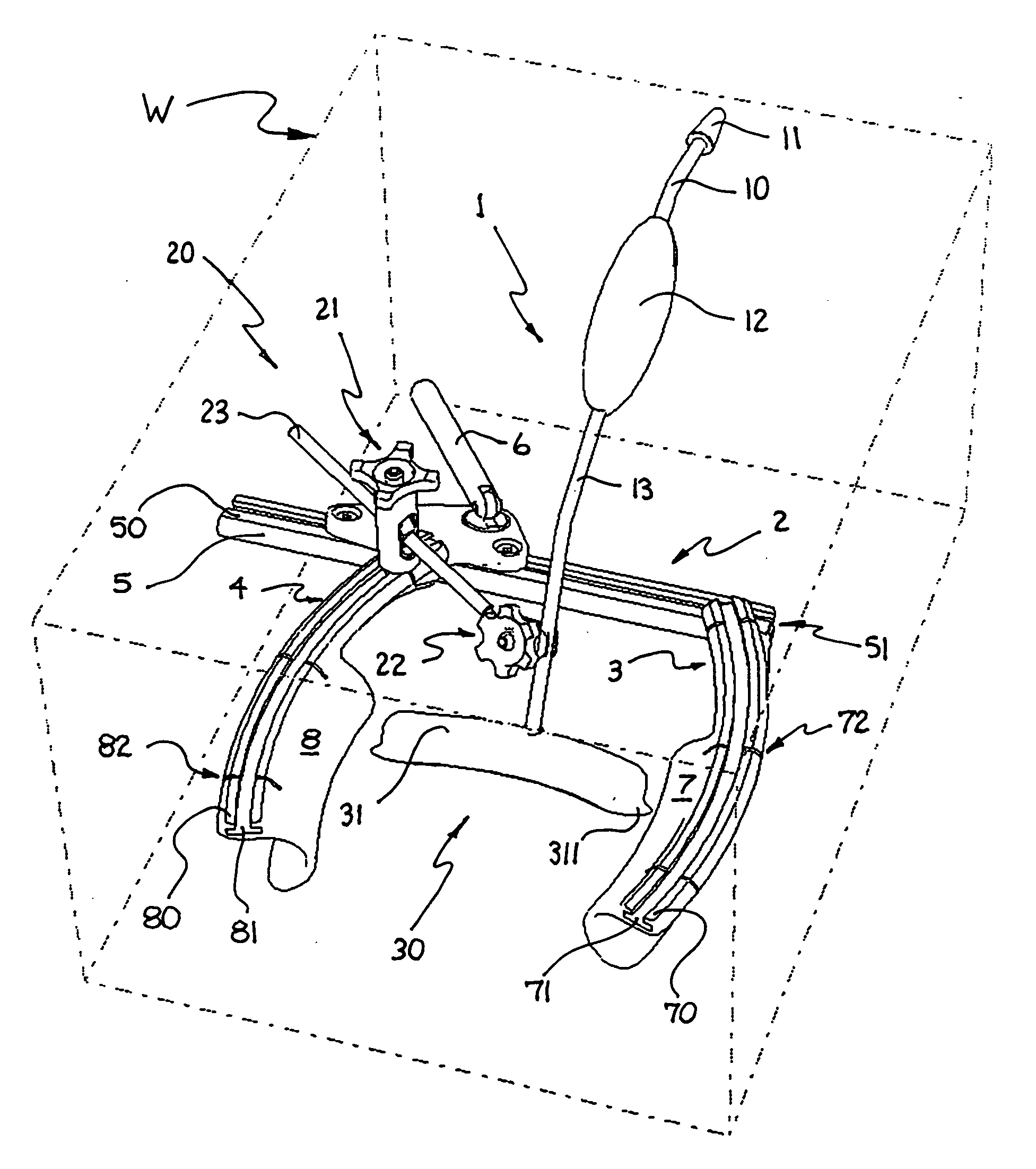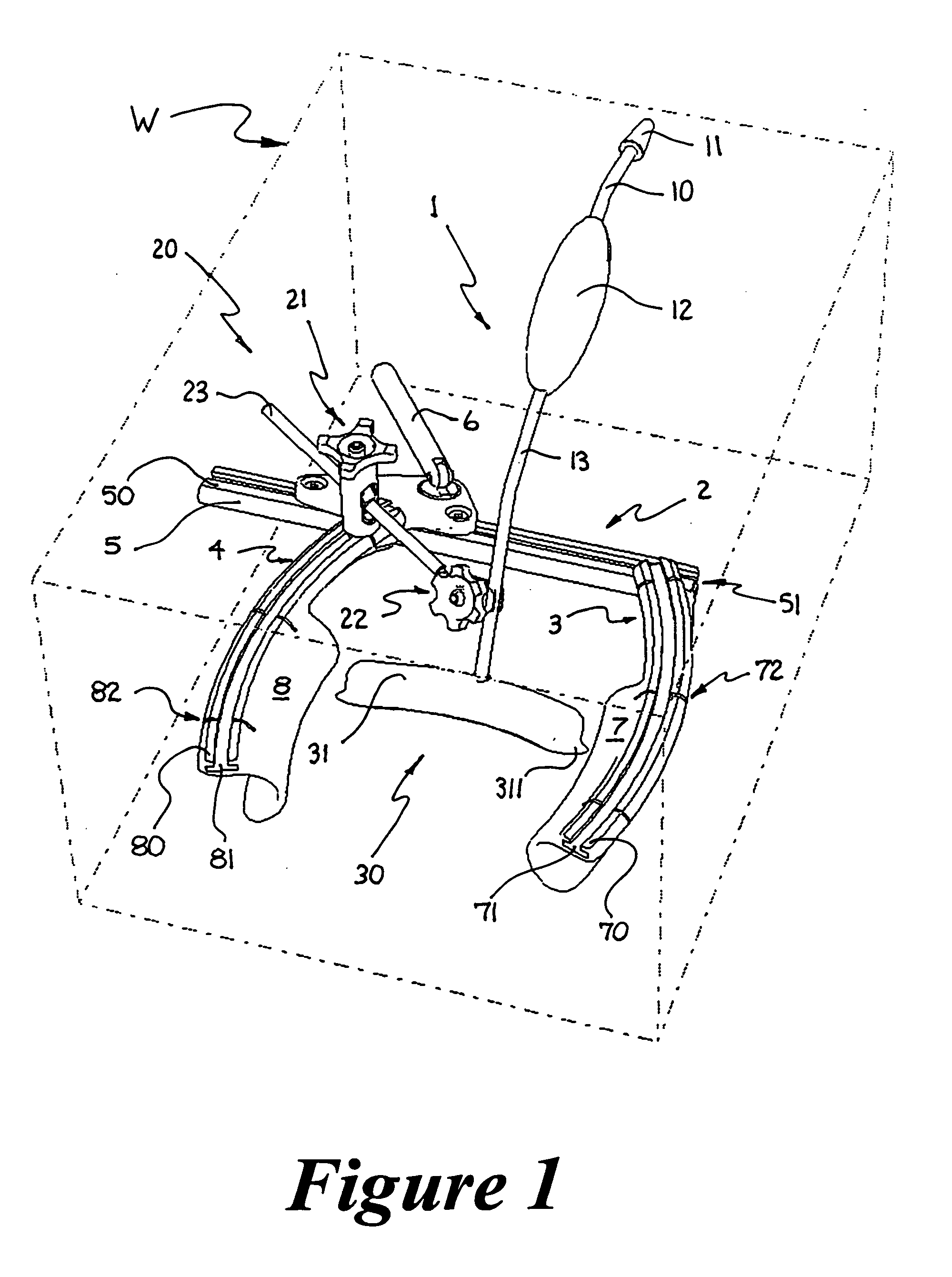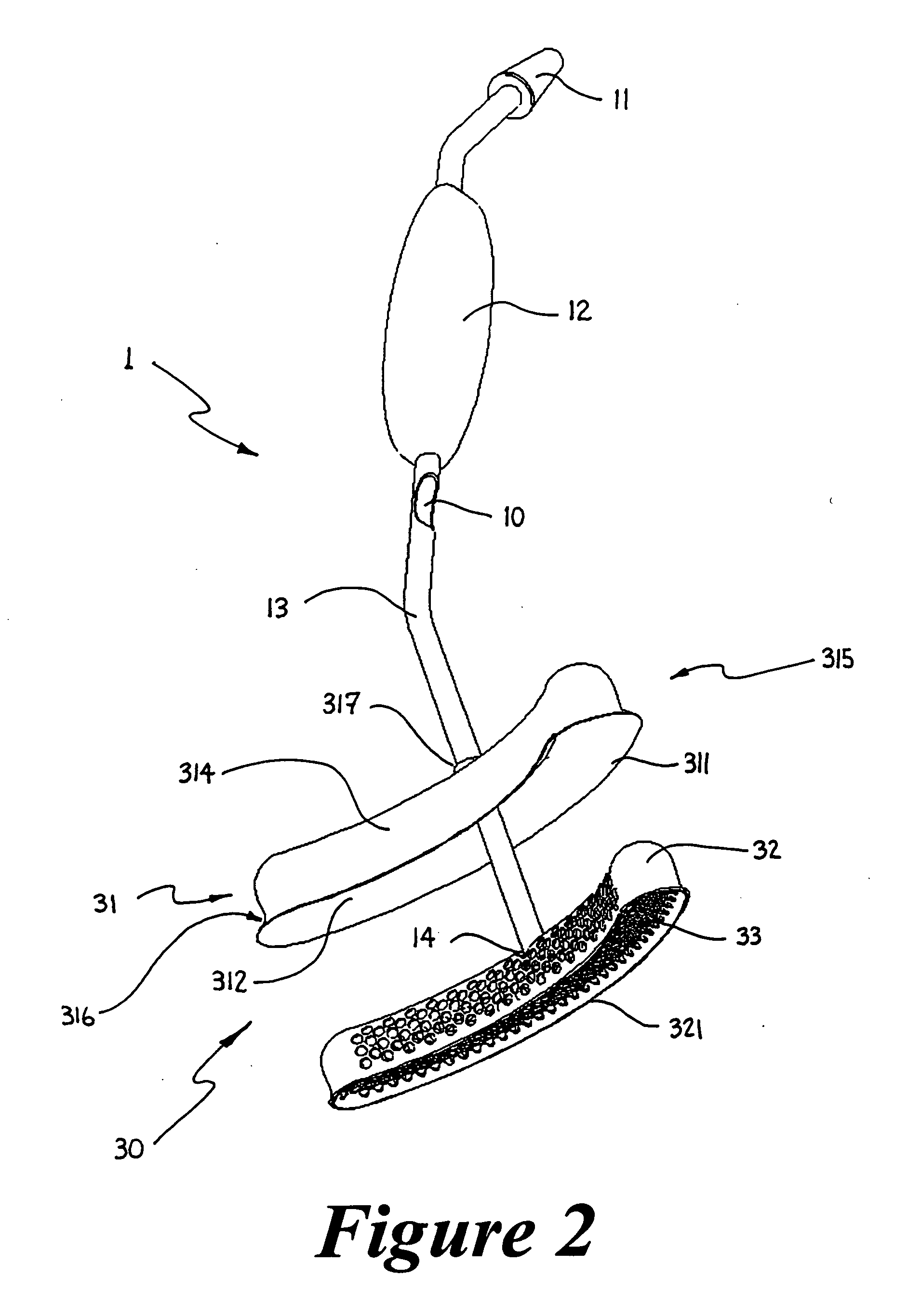Surgical device and method for pericardium retraction
a pericardium retraction and surgical device technology, applied in the field of surgical devices, can solve the problems of imposing loads and constraints on the beating heart, affecting the normal beating function of the heart, and inducing the onset of physiologically undesirable effects
- Summary
- Abstract
- Description
- Claims
- Application Information
AI Technical Summary
Benefits of technology
Problems solved by technology
Method used
Image
Examples
first embodiment
[0055] As further illustrated in FIG. 2, a pericardium retraction device 1 according to the present invention is comprised mainly of a tissue-engaging member 30, a device manipulating means such as shaft member 13, a conduit means such as conduit passage 10, and a suction line interface means such as pneumatic fitting 11. The tissue-engaging member 30 is of a substantially arcuate shape when viewed along the longitudinal axis of shaft member 13. It is further comprised of a substantially-elastic sheath 31 serving as an outer shell that is insertable over a substantially-rigid inner structure 32. Inner structure 32 is substantially air permeable. For instance the inner structure may be designed and produced with an open configuration structure, such as a perforated sheet structure or a truss-like space frame structure. Inner structure 32 is rigidly attached at one side thereof to shaft member 13 in the vicinity of source orifice 14, in either a permanent or demountable assembly. At a...
second embodiment
[0094] FIGS. 5 to 7 illustrate a second embodiment according to the present invention. The tissue-engaging member 130 of the pericardium retraction device 101 is comprised of a plurality of bell-shaped suction ports 36, each demountably attached to a substantially semicircular tubular spine 35 through an attachment fitting 351. This embodiment illustrates five such ports, which shall be referred to as ports A, B, C, D, and E in a clockwise direction. The suction ports 36 are described in greater detail below. The fittings 351 are preferably arranged such that their centerlines are substantially parallel to the centerline defining the semicircular tubular spine 35. Alternative embodiments may have attachment fittings351, and consequently suction ports 36, attached to spine 35 in a variety of orientations or combination of orientations. For example, ports A, C, and E may be configured with centerlines substantially parallel to the centerline defining semicircular spine 35, and ports B...
third embodiment
[0112] In this third embodiment, the tissue-engaging member 38 is comprised of a hollow attachment feature 388, a source orifice 141, a diaphragm member 387, and a spool valve means 380. The hollow attachment feature 388 serves to fixture said tissue-engaging member 38 to a substantially rigid tubular spine (like 35) in a plurality arrangement, or directly to a shaft member 13 in a single port arrangement. The source orifice 141 serves to communicate with the negative pressure source P2 through tubular spine (like 35) and conduit member 10. The diaphragm member 387 delimits a negative pressure plenum within tissue-engaging member 38.
[0113] The spool valve means 380 may assume either a “valve closed” position in which the negative pressure plenum P2 is delimited by diaphragm member 387, as illustrated in FIG. 9A, or an “open valve” position in which the negative pressure plenum is delimited by the engaged pericardium along perimeter 384, and as illustrated in FIG. 9B, the substantial...
PUM
 Login to View More
Login to View More Abstract
Description
Claims
Application Information
 Login to View More
Login to View More - R&D
- Intellectual Property
- Life Sciences
- Materials
- Tech Scout
- Unparalleled Data Quality
- Higher Quality Content
- 60% Fewer Hallucinations
Browse by: Latest US Patents, China's latest patents, Technical Efficacy Thesaurus, Application Domain, Technology Topic, Popular Technical Reports.
© 2025 PatSnap. All rights reserved.Legal|Privacy policy|Modern Slavery Act Transparency Statement|Sitemap|About US| Contact US: help@patsnap.com



